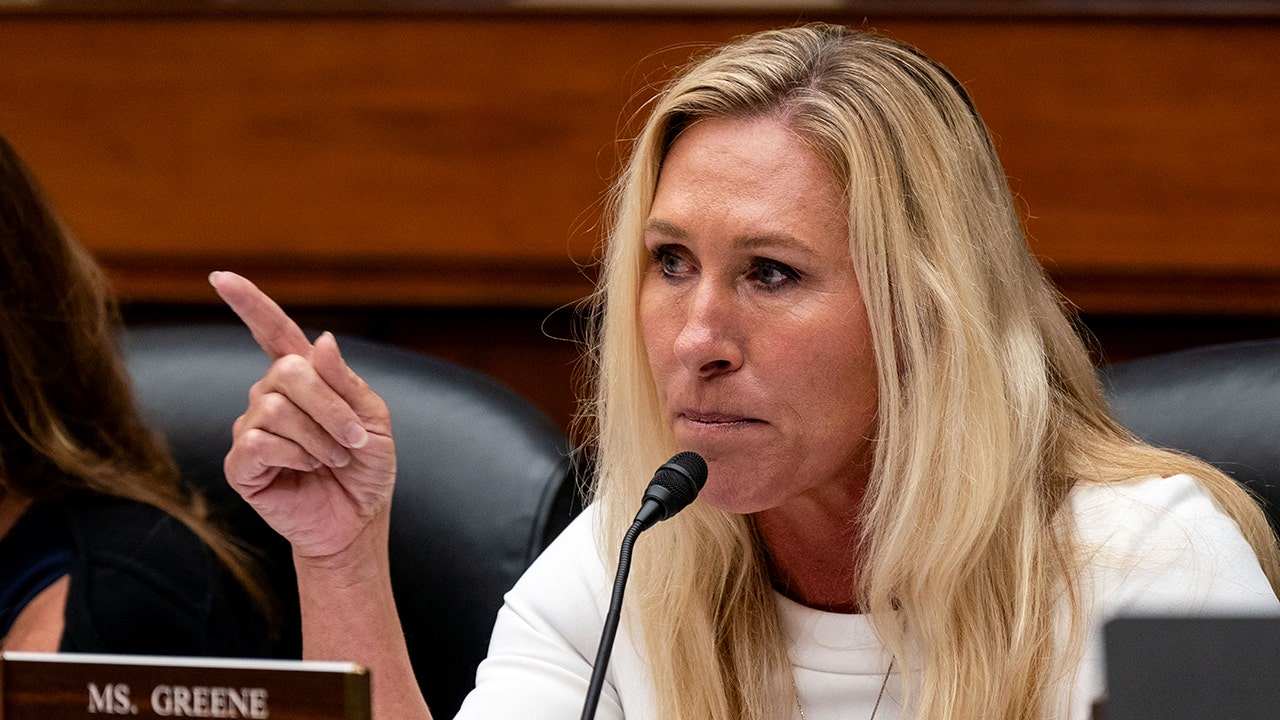Connecticut
‘Hidden polluters’ wreak havoc in Connecticut homes: report

Nearly a quarter of the nitrogen oxide pollution in the state stems from fossil fuel-burning furnaces and water heaters — eight times more than the state’s power plants, according to a report released Wednesday by Connecticut environmental groups who are advocating for zero-pollution air quality standards for heating, ventilation and air conditioning.
The report, authored by Save the Sound, Conservation Law Foundation, Sierra Club Connecticut and the Rocky Mountain Institute, encourages homeowners to swap their fossil fuel-burning systems for electric heat pumps and calls on policymakers to mandate that all furnaces and water heaters sold in the state after 2030 must be pollution-free.
“Buying a new fossil fuel HVAC or water heater instead of buying a heat pump would be like choosing dial-up internet when you could be using wifi,” Leah Louis-Prescott of the RMI Carbon-Free Buildings team, said. “It’s time to upgrade.”
While environmentalists lead the push for electric heat pumps, leaders in the state’s HVAC industry caution that a statewide ban on fossil fuel heating options may not be in the best interest of consumers.
The report, titled “Connecticut’s Hidden Air Pollution Problem: Fossil Fuels in Buildings,” found that homes and businesses emit approximately 30% of the state’s greenhouse gasses and 23% of the state’s nitrogen oxide pollution, creating a “significant barrier” to meeting state climate targets and federal air quality standards.
Nitrogen oxide is a precursor to ozone — a molecule crucial to shielding the earth from ultraviolet radiation high up in the stratosphere. But on the ground level, ozone pollution is linked to adverse health outcomes, including respiratory disease and infection, cardiovascular harm and even premature death.
“Connecticut has been failing to meet federal limits for ozone for many years,” Louis-Prescott said. “That essentially means that Connecticut residents are breathing unhealthy levels.”
“We’re talking about a major cost to residents’ health,” Louis-Prescott added. “(To) put into perspective the magnitude here, in 2017, in Connecticut alone, fossil fuel equipment in buildings caused (an estimated) 116 premature deaths that year, according to (an RMI analysis based on a model produced by) Harvard researchers.”
The report said the health risks disproportionately impact communities of color, stating that “The city of New Haven, for example, which has a population of roughly 60% people of color, routinely experiences ozone levels so high that it received an ‘F’ grade for ozone in the American Lung Association’s 2023 State of the Air report.”
Louis-Prescott said that further analysis estimates the cost of building pollution on human health at $520 million annually — a cost that Connecticut could avoid.
“We are living with these fossil fuel polluters in our homes and in our workplaces, and they’re contributing to the ozone and outdoor air pollution in Connecticut, they’re contributing to health impacts for residents, and they’re contributing to climate change in a really significant way, and we don’t need to live with these appliances,” Louis-Prescott said. “We have the opportunity to upgrade to superior non-polluting electric heat pumps instead, and Connecticut policymakers can help us do that.”
Charles Rothenberger, a climate and energy attorney for Save the Sound, said that while the Connecticut Department of Energy and Environmental Protection is developing the state’s Comprehensive Energy Strategy there is a “real opportunity” to improve the efficiency and reliability of residential energy systems while reducing pollution.
The report calls for DEEP to use the state’s Comprehensive Energy Strategy to develop zero-pollution air quality standards for HVACs and water heaters and mandate that all furnaces and water heaters sold in Connecticut in or after 2030 are pollution-free. The report’s authors said the goal is to facilitate a gradual shift to cleaner heat systems.
Jennifer Jennings, the executive director of the Connecticut Heating and Cooling Contractors Association, said she is cautious of a statewide mandate.
While the CHCC is a fuel-neutral association that does not promote one fuel source over another, Jennings said she “certainly caution(s) people anytime you’re sending the masses in one direction.”
“We really want to see a lot more renewables. I think the direction of the industry collectively from manufacturers is going in that direction anyway. But when you apply a mandate that’s going to come down from the state, (which is) interest group driven, I think you have to caution that,” Jennings said.
One of Jennings’ concerns is how residents will continue to heat their homes during power outages or grid failures.
“When you look at creating massive use of electricity, you have to stop and say ‘What happens when that energy source fails?’ ” Jennings said. “Look at California, look at Texas. It’s not that this hasn’t happened already, (with) other states (having) problems or overburdening the grid.”
Jennings said that while electric heat pumps, specifically ductless systems, are “a wonderful option” and “have come leaps and bounds in terms of technology,” they are not viable for all homes.
“Every application here in Connecticut is very unique. We’ve got some homes that are several hundreds of years old, and contractors going to work with them to make sure the cleanest, most efficient, cost-saving options (are) available for them,” Jennings said.
Jennings said that all heating systems, regardless of the fuel source, are regulated through state, federal, industry and ASHRAE standards. She also pointed out that “electric” doesn’t always mean “clean.”
“It’s paramount that champions of any fuel regulations understand how electricity is actually produced,” Jennings said. “When you look at the power grid and you understand how power is created, it’s less than 7% here in Connecticut that’s actually renewable. Greater than 50% comes from natural gas. So even as we push people to be on, say, ductless heat pumps, as this (report) talks a lot about, where are you getting your supply from?”
Jennings emphasized how fuel trends fluctuate based on energy costs and state rebate initiatives. If the state continues to push for system conversions or mandates electric heat pumps, Jennings said she is concerned about how the current contractor shortage and other workforce challenges will meet the demand.
According to the report, 85% of Connecticut homes use heaters that burn fossil fuels.
While getting these residences to convert to electric heat pumps may seem like a mammoth undertaking, Rothenberger looks to Maine’s transition as an example of successful policy in action.
“They have surpassed their target of installing 100,000 heat pumps across the state two years early, and have doubled down on their target to install 175,000 more by 2027 — and this is in a state with only about 600,000 homes,” Rothenberger said. “Clearly it’s getting consumer acceptance.”
When asked to comment on the report’s calls for a 2030 pollution-free mandate, DEEP said in a statement that the agency is “grateful that advocates are analyzing and proposing solutions to address the state’s public health and air pollution challenges and welcome the opportunity to evaluate how we might implement solutions in partnership with the legislature.”
“The impacts of climate change here in Connecticut have been deeply felt this summer, as recently as last week, from destructive rains and extreme flooding, to extreme heat and wildfire smoke,” DEEP Media Relations Manager Paul Copleman said.
“To achieve Connecticut’s climate goals of reducing statewide emissions 45% by 2030 and 80% by 2050, relative to a 2001 baseline, homes and businesses must significantly reduce emissions in a manner that helps manage costs for communities with the highest energy burdens and poor health impacts.”
Copleman said that DEEP already has an energy efficiency and demand management investment plan, programs for homeowners to minimize energy-related costs and fuel usage, and efforts to address “barriers, such as mold and asbestos that inhibit the completion of residential weatherization and energy efficiency measures, and further clean energy deployment.”
“We have a number of initiatives in place, but need to do more,” Copleman said.
Rothenberger said environmental advocacy groups plan to work with the state legislature to develop specific standards and incentives for updated heating systems.
“I think the timing is particularly apt not only because we’re in the middle of that (DEEP) Comprehensive Energy Strategy planning process, but also because of the unprecedented amount of funding that’s available to help households and businesses with this transition,” Rothenberger said.
Residents can receive up to $15,000 in combined incentives from Energize Connecticut for converting to electric heat pumps. By 2024, federal incentives will provide up to $8,000 in rebates to low-income homeowners who install electric air-source heat pumps, according to a press release announcing the new report.
The report also found that Connecticut households could save 35% on their heating bill by transitioning to an electric heat pump and another 10% by switching to a heat pump water heater.
Rothenberger said that educating residents on the benefits is key.
“Highlighting the opportunities around replacing those equipment with cleaner, less polluting options, is really critical so that people know that there are alternatives and they’re not just automatically thinking, ‘Well, I just want to replace this (fossil-fuel) furnace or this heater with whatever the newest model is,’ ” Rothenberger said. “Consumers can actually do good for the environment while also doing good for their household budget.”

Connecticut
O Little Town of Bethlehem: Connecticut Town Celebrates Christmas All Year Long

A rural town connects beautifully to the miraculous event so long ago.
“O little town of Bethlehem, how still we see thee lie,” begins a beloved Christmas carol sung since 1868, paying homage to Jesus’ birthplace.
But have you heard of Bethlehem, Connecticut?
It’s a favorite destination because of its Christmas connection. With approximately 3,400 residents, modest in size like its ancient namesake once was, the rural town of Bethlehem has two places that connect beautifully to that miraculous event of the Nativity.
The Nutmeg State’s Bethlehem is home to Regina Laudis Abbey, a community of cloistered Benedictine nuns founded after World War II. Here, the nuns have a magnificent early-18th-century Neapolitan crèche, displayed in a restored barn nearly as old and donated specifically to house this Nativity scene. Both the crèche and barn received a meticulous four-year restoration completed less than two decades ago by experts from the Metropolitan Museum of Art in New York City.
This is no small Neapolitan crèche. It spans 16 feet wide and 6 feet deep. The Nativity scene takes place before a backdrop mural of an 18th-century seaside and an azure sky.
Jesus, Mary and Joseph are at the heart of the crèche where our Savior’s birth is set vividly in a Neapolitan mountainside village — complete with angels hovering in wonderment and awe and scores of villagers react in different ways to the overwhelming presence of the Holy Family.
Simple peasants close to the Holy Family stand in awe and mingle with the Three Kings. Some villagers stop to contemplate Jesus’ birth. Others go on with everyday life as if nothing unusual or life-changing is happening.
The animated scene’s 68 figures and 20 animals of carved wood, ceramic, metal and plant fiber stand up to 16 inches high. They’re dressed in their original period dress that the Metropolitan Museum specialists also carefully restored to pristine condition.
From all indications and evidence, this crèche was a gift to Victor Amadeus II of Sardinia on his coronation in 1720. In 1948, it was brought to America and then in 1949 the woman who then owned it donated it to the abbey to preserve and display it.
Also on the abbey’s grounds is a simple, life-size Nativity scene of the Holy Family, located in a simple shed, with Joseph dressed in a checked farmer’s jacket. Abbey visitors might even spot a sheep or two.
Later during the Christmas season, you might want to watch the 1949 film Come to the Stable that tells the story of Regina Laudis Abbey and whose main characters, two nuns played by Loretta Young and Celeste Holm, are based on the actual Benedictine nuns who came from France after World War II to establish it. It’s a much neglected classic.
Church Highlights Nativity All Year
In nearly a straight line, less than 3 miles from the abbey and a few yards from the center of town, the Church of the Nativity remembers the birth of Jesus year-round. Now a part of Prince of Peace parish, the church was built in 1992 of fieldstone and wood and specifically designed to suggest or look like a large crèche. The church is topped with a star that is lit at night and directs people to the sacred edifice like the star directed the Magi.
The focal point of the church vestibule is a life-size manger scene. The figures were carved from a single pine tree by a Maine artist.

A panorama of the town of Bethlehem is etched high on the glass behind the Holy Family. Etched on another glass panel are the Three Kings, depicted following the star to adore the Newborn King.
In the nave, the church’s interior of stone, wood and large beams intentionally add to the manger atmosphere — as do the words “O Come All Ye Faithful” that stretch and beckon from high behind the altar.
The Nativity atmosphere continues all year. The Knights of Columbus built a 20-foot crèche on the parish’s front lawn.
Another Major Nativity
A little over 500 feet away is the Bethlehem Post Office, which, of course sees lots of extra traffic at this time of year — people enjoy getting their Christmas cards postmarked from “Bethlehem” and envelopes stamped with a Christmas greeting from the town.
Those who do visit these two Nativity treasures can continue singing Little Town of Bethlehem’s later verses:
How silently, how silently The wondrous gift is given! So God imparts to human hearts The blessings of His heaven. No ear may hear His coming, But in this world of sin, Where meek souls will receive him still, The dear Christ enters in.
O holy Child of Bethlehem Descend to us, we pray Cast out our sin and enter in Be born to us today O come to us, abide with us Our Lord Emmanuel!
PLAN YOUR VISIT
Visiting hours for the abbey crèche: Wednesdays through Sundays from 10 a.m. – 3 p.m. Closed Mondays and Tuesdays. Winter Closure: Jan. 7-Easter Sunday; free.
Connecticut
Man shot, killed in New Haven

A man has died after he was shot in the Elm City Tuesday night.
While details remain limited, police say the shooting happened on Edgewood Avenue.
No arrests have been made at this time and police are only tentatively identifying the man as a 43-year-old New Haven resident.
Anyone with any information is being asked to contact New Haven Police.
Connecticut
Lawmakers split over CT Medicaid funding spend, ahead of legislative session

President-elect Donald Trump, a longtime opponent to the Affordable Care Act (ACA), has the backing of a soon-to-be controlled Republican House and Senate to make changes to the ACA.
The proposed changes could result in how Medicaid is financed in Connecticut and across the U.S. Well over a half of Medicaid spending by states is financed by the federal government, with Connecticut receiving 63.4% of its Medicaid spending share in fiscal year 2023, according to KFF.
State lawmakers, however, are not overly concerned just yet.
“There have been some worrisome noises, but nothing to date that’s concrete,” State Sen. Matt Lesser, co-chair of the Human Services Committee, said.
Lesser said lawmakers are paying close attention since federal changes to Medicaid would significantly impact “over almost half of the kids in the state, pregnant women, [and] retirees.”
The state-funded Medicaid program, known as HUSKY in Connecticut, provides coverage to undocumented children. On July 1, the cap was raised to include undocumented young people up to age 15.
Medicaid cost overruns could put access for low-income patients at risk
State finances will be central to Connecticut lawmakers’ discussions in the upcoming legislative session Jan. 8, with the potential expansion of Medicaid eligibility among undocumented immigrants.
Connecticut’s Medicaid program experienced cost overruns in the hundreds of millions of dollars at the start of the current fiscal year. The Connecticut Mirror reported that the Department of Social Services (DSS) is tallying usage and cost for the program, which has had a much higher interest in enrollments than expected, according to the DSS. The total cost is expected to be out before Gov. Ned Lamont releases his budget in February.
State minority leaders have proposed to tighten the Medicaid fiscal belt.
Stephen Harding, Senate Republican Leader, and Vincent Candelora, House Republican Leader, said in a statement that the state should “suspend this policy immediately with the goal of eliminating it in the next budget cycle.”
The passage of the proposal would need the full approval of the state General Assembly.
But Democrat lawmakers seek to further expand the age cap for Medicaid eligibility among undocumented people.
State Rep. Jillian Gilchrest, co-chair of the Human Services Committee, is among lawmakers and advocates who hope to push the cap higher this session – to 18 years.
Gilchrest said lack of access to health care would mean that “their need is going to be heightened down the road, and we’re going to have to cover the cost of higher cost health care.”
And that would also apply to other Connecticut residents enrolled in Medicaid, she said.
“We need to have conversations about what access to care looks like for a population that continues to increase in our state because they are experiencing economic inequality,” Gilchrest said.
-

 Business1 week ago
Business1 week agoFreddie Freeman's World Series walk-off grand slam baseball sells at auction for $1.56 million
-
/cdn.vox-cdn.com/uploads/chorus_asset/file/23951353/STK043_VRG_Illo_N_Barclay_3_Meta.jpg)
/cdn.vox-cdn.com/uploads/chorus_asset/file/23951353/STK043_VRG_Illo_N_Barclay_3_Meta.jpg) Technology1 week ago
Technology1 week agoMeta’s Instagram boss: who posted something matters more in the AI age
-
/cdn.vox-cdn.com/uploads/chorus_asset/file/24924653/236780_Google_AntiTrust_Trial_Custom_Art_CVirginia__0003_1.png)
/cdn.vox-cdn.com/uploads/chorus_asset/file/24924653/236780_Google_AntiTrust_Trial_Custom_Art_CVirginia__0003_1.png) Technology4 days ago
Technology4 days agoGoogle’s counteroffer to the government trying to break it up is unbundling Android apps
-

 News5 days ago
News5 days agoNovo Nordisk shares tumble as weight-loss drug trial data disappoints
-

 Politics5 days ago
Politics5 days agoIllegal immigrant sexually abused child in the U.S. after being removed from the country five times
-

 Entertainment6 days ago
Entertainment6 days ago'It's a little holiday gift': Inside the Weeknd's free Santa Monica show for his biggest fans
-

 Lifestyle6 days ago
Lifestyle6 days agoThink you can't dance? Get up and try these tips in our comic. We dare you!
-

 Technology7 days ago
Technology7 days agoFox News AI Newsletter: OpenAI responds to Elon Musk's lawsuit


















